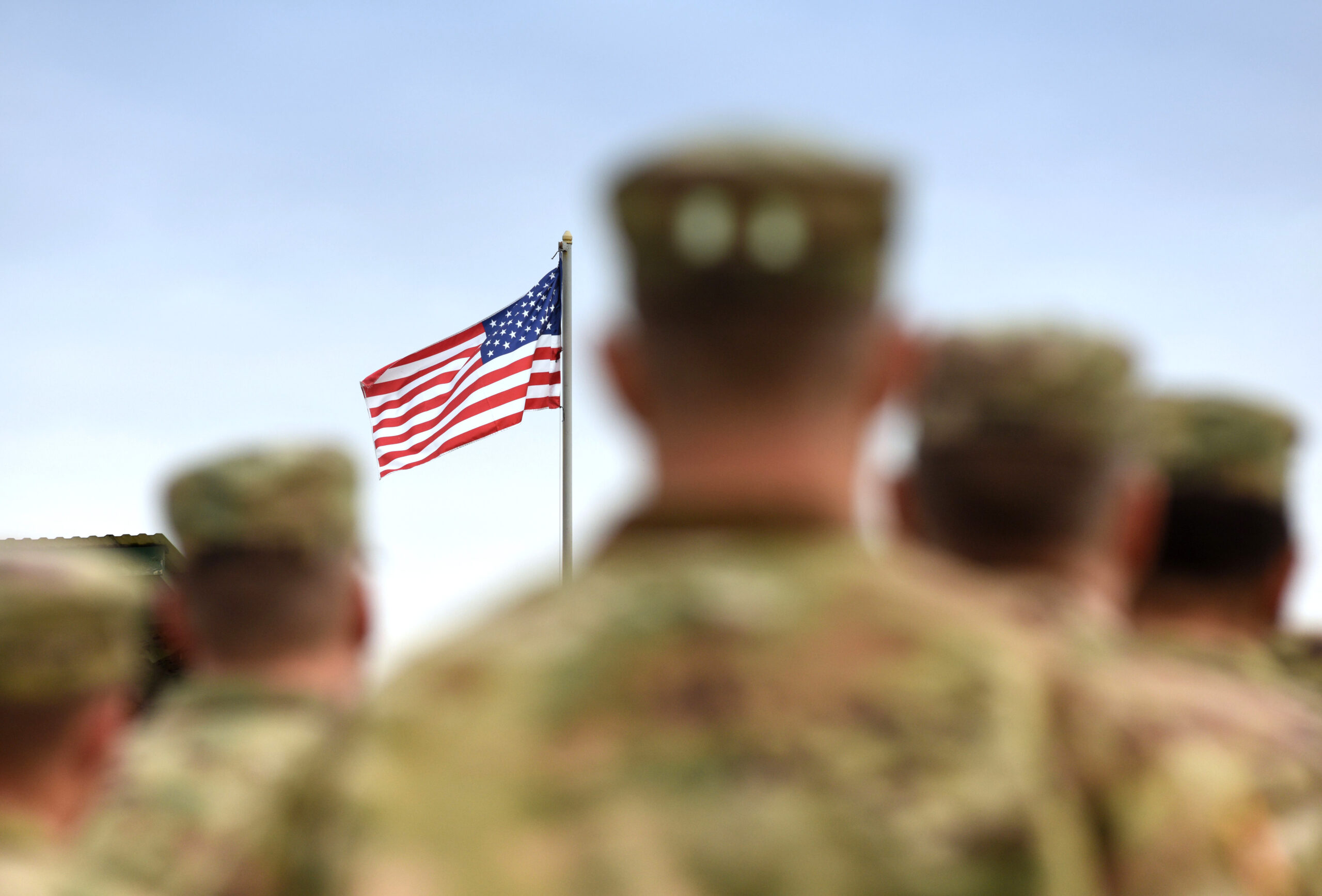This memorandum provides an overview of how states have prioritized correctional staff and incarcerated individuals as part of publicly available vaccine plans and discusses considerations around the administration of such vaccines in correctional settings.
The following document is intended to provide references to state statutes, regulations, executive orders, policies, and other resources that are currently in the public domain. This document is not an exhaustive list. This document primarily draws from publicly available information and, therefore, may not fully reflect the policy or practices of states and jurisdictions referenced herein. NGA makes no endorsements or recommendations of any proposal or legislation that is described in this memorandum.
Background
With Emergency Use Authorizations (EUA) now issued by the U.S. Food and Drug Administration (FDA) for the Pfizer/BioNTech and Moderna COVID-19 vaccines, state and local leaders are responsible for ensuring rapid and equitable distribution to millions of Americans across the country. State responsibilities include determining allocations to critical populations, receiving vaccine allocations from the federal government, managing the systems for ordering, distributing, and monitoring vaccines, supporting the administration of vaccines in a wide variety of settings and engaging and communicating with communities in creative ways to address those who may face barriers to access or be hesitant to get the vaccine.
Prisons and jails across the country have been epicenters of the COVID-19 pandemic, where, according to certain studies, the case rate for individuals in prison is as much as five times higher than the general population. Additionally, the congregate nature of correctional settings creates myriad challenges when it comes to preventing and controlling the transmission of the disease. As Governors and state officials continue to develop and implement statewide vaccination plans, states are determining how correctional staff and incarcerated individuals are prioritized in the distribution process and developing procedures for vaccine administration. Because people who work and live in jails and prisons are at high risk for getting COVID-19, ensuring vaccine distribution and administration to correctional populations is critical to each state’s COVID-19 response efforts.
This memorandum provides an overview of how states have prioritized correctional staff and incarcerated individuals as part of publicly available vaccine plans and discusses considerations around the administration of such vaccines in correctional settings.
Overview of Interim State Vaccination Plans: Prioritization for Correctional Settings
With a limited initial supply of the vaccine, states have led the prioritization of certain populations for vaccine allocation through a transparent and equitable process. Allocation priority decisions are components of state vaccination plans, determined by each state and utilizing federal guidelines to identify prioritized populations in each phase and subphase. States have taken various approaches to vaccination priority for correctional staff and individuals in the justice system. Upon review of each state’s publicly available vaccination plan, the following trends emerge from finalized and interim plans regarding prioritization of correctional staff and incarcerated individuals.
- In a substantial majority of states, residents and staff at correctional facilities have vaccination priority. Whether categorized as first responders, frontline workers, essential workers or critical infrastructure workers, corrections staff have vaccine priority most states. In several states, the plans either directly identify people who are incarcerated as a critical population eligible for vaccination priority or they identify sub-populations that would overlap with people who are incarcerated (such as individuals 65 years of age or older). In some states, correctional staff are ahead of incarcerated people in vaccination priority.
- Many states are actively updating and releasing clarifying information on prioritization. For example, several states are still in the process of making categorized determinations for law enforcement, correctional staff, and incarcerated individuals. Some of these states reference that they will use federal guidance to inform categorizations, but that the state will make final determinations within phases.
- Several plans identified groups in early phases of vaccine administration which may overlap significantly with people who are incarcerated and correctional staff. The most common first priority group in state plans is healthcare professionals treating patients with COVID-19 or likely to come into contact with infectious materials. Given the presence of COVID-19 in correctional facilities and the provision of on-site healthcare services in those facilities, it is possible that correctional healthcare workers may qualify for the highest level of vaccine priority in some states. Furthermore, because some people who are incarcerated or work in correctional facilities are over 65 years of age or have qualifying medical conditions that would make them higher priority than the general population of people who are incarcerated, it is possible that state correctional facilities will commence administering vaccines before the phase in which incarcerated individuals are generally eligible for vaccination.
- State vaccine plans identify equity among facilities and across geography as significant considerations in vaccine administration, raising questions about how correctional facilities will be prioritized in relation to other congregate settings. Long term care facilities are generally higher priority than other congregate settings given their particularly vulnerable resident populations. However, equity considerations may inform prioritization decisions among other congregate settings, including correctional facilities, reentry facilities, residential juvenile justice facilities, residential treatment centers, state mental health institutions and more.
- Concerns about vectors of transmission inform prioritization strategies in several states. Several plans note that the risk of transmission in correctional facilities is driven by COVID-19-positive staff transmitting the coronavirus to residents. With this in mind, several states prioritize correctional staff vaccination because it may be the most effective way to reduce infections in correctional facilities when vaccine supply is limited.
State Considerations for Vaccine Administration in Correctional Settings
In accordance with state vaccination plans, each state has begun vaccinating priority populations—with some states already beginning to inoculate correctional staff and incarcerated individuals. Throughout the vaccine distribution process, and particularly as more doses become available, collaboration with key stakeholders such as local governments, health care providers, health departments, communities, and the private sector will be critical to an effective and equitable phased COVID-19 vaccine distribution campaign. As states embark on the largest mass vaccination campaign in our lifetimes, challenges are to be expected. Correctional departments may face unique logistical challenges to vaccine administration because of potential resource constraints and security restrictions. Though correctional facilities are experienced in administering vaccinations, a campaign of this scale and with sequenced administration brings novel challenges. Furthermore, state vaccination plans may impose additional requirements on correctional facilities that differ from routine vaccination. States can prepare screening and discharge procedures to ensure vaccines are administered according to clinical guidelines. The following are observations for state consideration as vaccinations continue or begin to be administered to correctional staff and incarcerated populations.
- Coordination across state corrections and public health departments. Governors’ offices can help facilitate a regular flow of information and facilitate and encourage coordination between state correctional and public health officials to implement procedures and provide resources for storage, handling, and safe administration of the vaccine.
- Conducting a policy review. Corrections officials are actively reviewing, implementing, and updating policies, protocols, and procedures because of COVID-19. Impacted agency policies may include the use and availability of hand sanitizer in prisons, visitation, cleaning procedures, provision of health care, and immunization protocols. As states begin implementing vaccination plans, Governor’s offices and correctional officials can review and update policies and procedures as needed in light of current needs and resources.
- Communication and education about the vaccine to build trust and inform patients and staff. Discussion of the benefits and risks of vaccination is sound medical practice, and state and correctional plans may include processes and procedures for informing incarcerated individuals and staff regarding the benefits and risks associated with vaccines. It is crucial that this information is up-to-date and accurate, and that this message is received by all stakeholders (e.g., staff, incarcerated individuals, family members). States can address vaccination hesitancy and develop education and training to minimize misinformation and increase public acceptance.
- Ensuring correctional staff safety. Protecting correctional officers, health care workers, and other correctional staff is of utmost importance. Correctional staff are on the frontlines of the pandemic response and are critical to both promoting public health and ensuring public safety. Correctional staff should be informed of the vaccine process and have access to the vaccine.
- Empowering agency health authorities. Correctional leaders are coordinating and collaborating with other state agencies to identify low, medium, and high COVID-19 risk levels and to ensure that appropriate vaccination prioritization and COVID-health services are available. Correctional health officials are keeping up to date on local, state, and national health guidance. In addition to coordinating communications and facilitating cross-agency collaboration, Governors’ offices can play a major role in supporting these efforts.
- Supporting equitable distribution and access. Given the disproportionate impact of COVID-19 on incarcerated people and broader challenges of health disparities and higher case rates experienced by communities of color, states may also consider targeted strategies to ensure that vaccines will be equitably and effectively distributed across and within correctional facilities. Because correctional facilities are often sited in geographically remote locations, equitable distribution will require advanced planning to ensure access for all correctional facilities. State correctional leaders can work with public health officials to support existing data collection and analysis efforts to monitor and address any disparities experienced by these groups in COVID-19 related vaccination, testing, hospitalization, death, and recovery.
- Promoting successful reentry and fostering continuity of care. Coordination among community corrections, community-based treatment, and public health resources is a key part of continuing treatment, ensuring full vaccination, and preparing individuals for release into their communities. Given the challenges of potential shortened release timelines to mitigate transmission within facilities and limitations in capacity among community service providers, correctional leaders may consider contingency plans and dedicated staff to develop mechanisms to continue this coordination.
Additional Resources
- COVID-19 ACIP Vaccine Recommendations, Centers for Disease Control and Prevention
- Immunization Clinical Guidance: September 2018, Federal Bureau of Prisons
- State COVID-19 Vaccine Resources, National Governors Association
- Phased Allocation Of COVID-19 Vaccines: State And Territorial Approaches, National Governors Association
- Allocating COVID-19 Vaccines in Initial Phases Of Distribution: Federal Recommendations And Considerations For States, National Governors Association
- Supporting an Equitable Distribution of COVID-19 Vaccines, National Governors Association
- Recommendations for Prioritization and Distribution of COVID-19 Vaccine in Prisons and Jails, Columbia Justice Lab, et. al.
All NGA COVID-19 memos can be found here, or visit COVID-19: What You Need To Know for current information on actions States/Territories are taking to address the COVID-19 pandemic; as well as advocacy, policy, and guidance documents for protecting public health and the economy.













